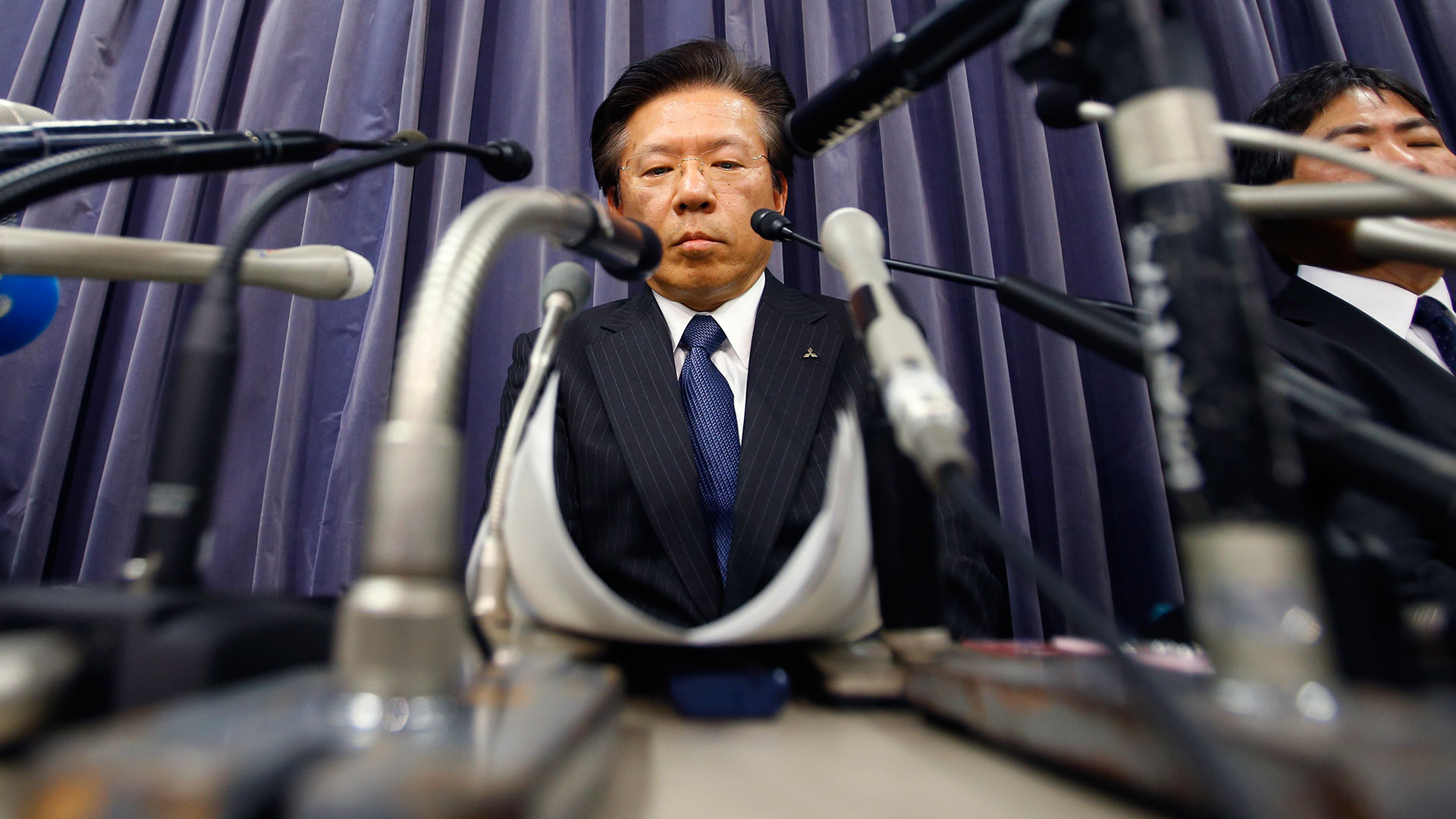

For more than a quarter century, Mitsubishi Motors Corp. has been falsifying its fuel economy numbers, the company’s president acknowledged on Tuesday. Just how many vehicles have been affected by that subterfuge, and whether any were sold in the U.S., may not be known until the automaker completes an internal investigation.
For the moment, the focus is on about 468,000 Mitsubishi-made vehicles sold in Japan through both the automaker’s own showrooms and those of its partner, Nissan. It was the latter that called attention to the problem earlier this month, when Nissan said it discovered inconsistent fuel economy test data.
This is the latest in a series of scandals plaguing the troubled Mitsubishi. The company was previously caught covering up safety defects that were blamed for at least one death. And the mishandling of its finances nearly led to its bankruptcy during the recession, until a consortium of Japanese banks stepped in to bail the automaker out.
But the scandal also puts a fresh spotlight on what has become a spiraling epidemic of deceitfulness by automakers around the world, including the ongoing investigation of Volkswagen for admittedly cheating on diesel emissions tests, as well as General Motors, which covered up a defective ignition switch for a decade. That was linked to at least 120 deaths.
“I feel a great responsibility,” said Mitsubishi president Tetsuro Aikawa during a Tuesday news conference in Tokyo. “We don’t know the whole picture and we are in the process of trying to determine that,” he added.
What is known is that engineers at Japan’s sixth-largest automaker falsified test results for a number of so-called Kei cars, the pint-sized models sold in Japan that compete largely on fuel economy. Those included the Nissan Dayz and Dayz Roox, as well as Mitsubishi’s own eK Space and eK Wagon.

To boost their mileage numbers, Mitsubishi engineers apparently relied on data compiled by running the affected vehicles through American fuel economy tests. Those procedures involve extensive highway simulations to account for the fact that U.S. motorists drive longer distances and at higher speeds than their Japanese counterparts. The stop-and-go driving in cities like Tokyo typically reduces fuel economy.
Since the cheating apparently dates back to at least 1991, industry observers believe Mitsubishi was likely to have falsified fuel economy numbers for other models. And the question remains whether its engineers also cheated on models sold outside the Japanese home market.
Mitsubishi was one of several automakers that significantly exceeded the current U.S. Corporate Average Fuel Economy, or CAFE, target for the 2016 model year, according to Jack Gillis, public affairs director for the Consumer Federation of America.
“Those results now have to be suspect until the investigation is complete,” Gillis said.
Mitsubishi President Aikawa revealed that the company has set up a panel of three lawyers, one a former government prosecutor, to continue the internal investigation. They are expected to report back in three months. By then, the carmaker is also expected to announce a compensation plan for those who purchased vehicles that are getting lower mileage than they were promised.
This isn’t the first time this has happened. Several years ago, Korean siblings Hyundai and Kia revealed they had improperly run fuel economy tests, resulting in shortfalls of up to six miles per gallon for a range of models including the Hyundai Sonata and Kia Soul. The automaker paid out hundreds of millions of dollars in compensation and legal settlements. Ford Motor Co. subsequently compensated owners when it misstated fuel economy numbers on some of its models.
The Japanese transport ministry has also mobilized a task force to see if other manufacturers have been cheating on their own fuel economy numbers. And a criminal investigation has been launched, with authorities raiding one of Mitsubishi’s engineering centers.
The automaker has suffered a series of setbacks over the past decade. In 2002, a woman walking down the sidewalk in Tokyo was killed when a wheel flew off a Mitsubishi truck. The vehicle had already been repaired under a secret warranty program meant to hide problems with a variety of the maker’s components, including brakes, clutches, and fuel tanks.
Separately, Mitsubishi nearly went broke in the years leading up to the global recession due to a series of bad financial moves. Among other things, the maker attempted to win over young American motorists by offering them so-called NINJA loans. That term is short for loans to those with “no income, no jobs or assets.” A large number of those buyers walked away from the loans after an introductory period where no payments were required, saddling Mitsubishi with massive losses.